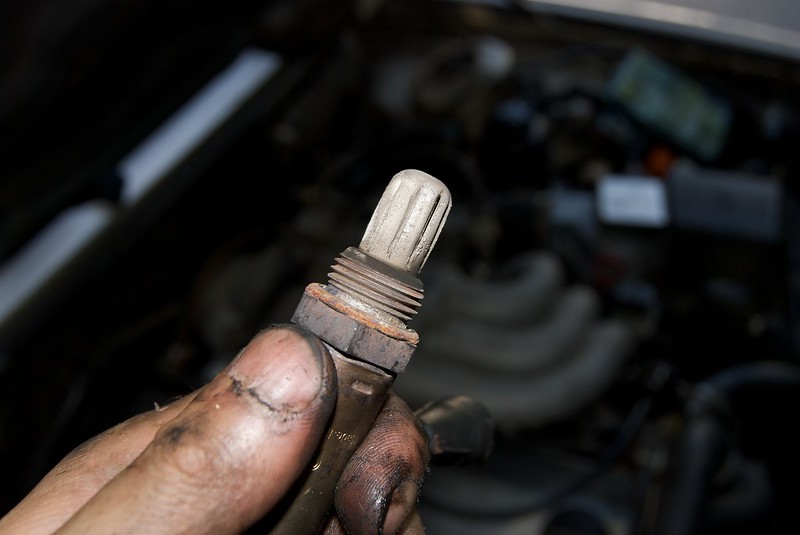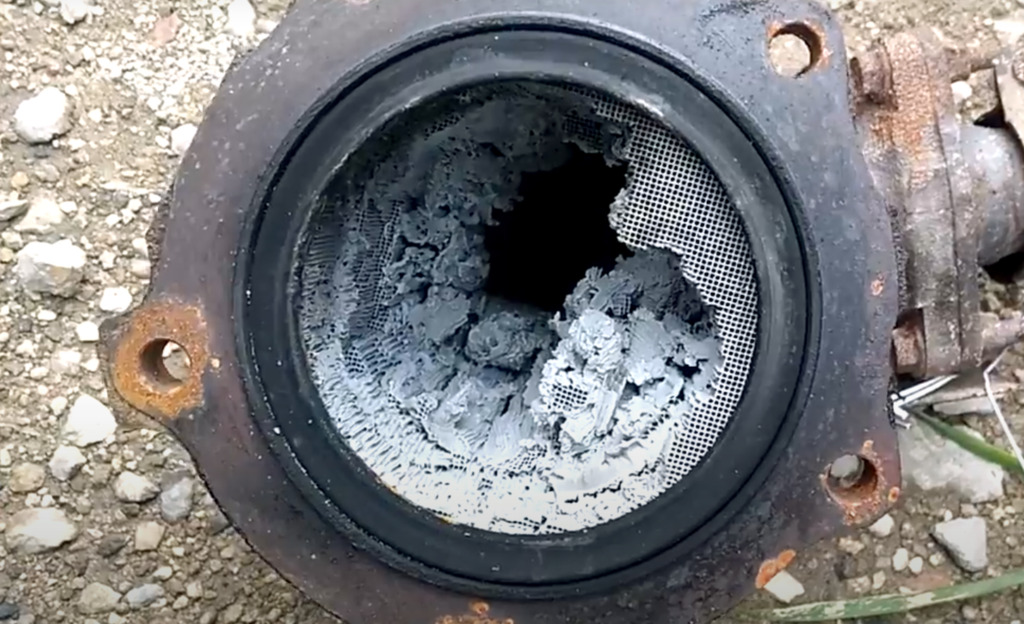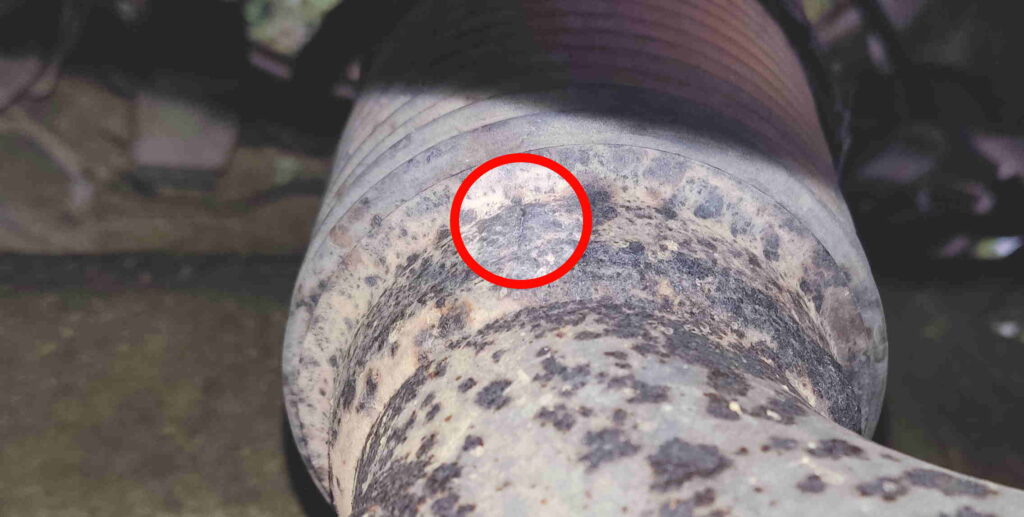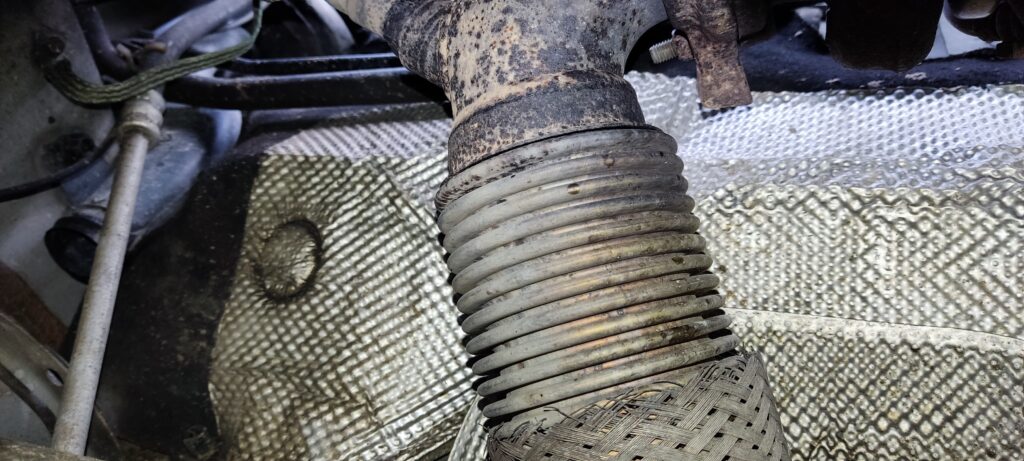Internal Combustion engines are finicky machines.
Engines need just the right amount of fuel, air, and spark at just the right time for them to be happy and run smooth. However, if either one is missing, incorrect, or unaccounted for by the Engine Control Unit (ECU), then the engine will start to run rough – especially at idle.
Now, you’ve probably heard that exhaust leaks can cause all kinds of problems, but can exhaust leaks cause rough idle?
Also Read: How To Get Exhaust Popping Sound (Without Tune)
Can Exhaust Leak Cause Rough Idle?
An exhaust leak can definitely cause rough idle if the leak is located before the upstream O2 sensor or very close to it. The exhaust leak will set off a false lean condition, to which the ECU responds by increasing fuel delivery. This results in an Air-To-Fuel mixture that’s way too rich and thus causes the engine to misfire and/or run rough at idle.
The most common places for an exhaust leak to occur before the upstream O2 sensor are the exhaust manifold, exhaust manifold gasket, downpipe, downpipe gaskets, and the flex pipe.
Why Do Exhaust Leaks Cause Rough Idle?
Ever since fuel injection was invented in the 80s, all engines using it were fitted with a bunch of sensors that monitor the exact amount of air going to the combustion chamber, and the amount of air leaving the engine through the exhaust. It was necessary in order to precisely calculate the exact amount of fuel that needs to be sprayed into the combustion chamber, otherwise, the engine will not run right or at all.

The inlet air is measured by either the Mass Air Flow sensor, Intake Temperature Sensor, the Manifold Absolute Pressure sensor, or a combination of all three, while the exhaust gases are measured by the upstream O2 sensor, which determines whether the engine is running lean or rich by measuring the amount of oxygen in the exhaust system. More oxygen means that the engine is running lean and less oxygen means that the engine is running rich.
Now, the exhaust system is completely sealed from the outside air, but if fresh outside air gets inside through an exhaust leak somewhere upstream of the O2 sensor, then the sensor will detect that there’s too much oxygen in the exhaust. The O2 sensor cannot tell whether it’s due to an exhaust leak or a poor Air-to-Fuel mixture, therefore it just sends the information to the ECU.
The ECU responds by richening the fuel mixture, even though the mixture is fine in reality. This causes the engine to run very rich, which in turn fouls the spark plugs and makes the engine run rough at idle.
Also Read: Can an Exhaust Leak Cause Loss of Power?
Can an Exhaust Leak Cause Damage to Anything?
An exhaust leak can and likely will damage your exhaust system components if it causes the engine to run rough and misfire.
If an exhaust leak is bad enough, then the upstream O2 sensor will be falsely reading a lean condition, even though the engine is running fine. This will force the ECU to add more fuel in order to compensate for the false lean condition.

Now, once the engine starts dumping a lot of unnecessary fuel into the combustion chamber, a bunch of unburnt fuel will escape through the exhaust valves and into the exhaust pipe. The unburnt fuel will then get in contact with hot exhaust components and ignite, causing a lot of damage to the exhaust piping and especially the catalytic converter.
If you suspect that your car has an exhaust leak and it even started running rough at idle and misfiring from it – get it fixed ASAP! Continuing to drive will cause more damage and lead to very costly repairs.
How To Locate an Exhaust Leak
The only places for an exhaust leak to occur before the upstream O2 sensor are the exhaust manifold, exhaust manifold gasket, downpipe, downpipe gaskets, and the flex pipe. That is, at least on most cars.
Different make and model vehicles have different exhaust system designs. On some cars, the upstream O2 sensor is located on the downpipe, others have the O2 on the catalytic converter, and some models even have the O2 on the exhaust manifold.
1. Check The Exhaust Manifold for Leaks
The exhaust manifold can only leak from three areas – the mounting surface gasket (between the engine and the manifold), the downpipe/turbo gasket, or the manifold itself can crack.
Exhaust manifold leaks make a really distinct ticking sound that closely resembles the sound of a noisy valvetrain.
Now, a bunch of engines, like the 5.7 Hemi, are notorious for broken exhaust manifold studs and loose bolts. This usually happens due to poor exhaust manifold design and constant heat and cooling cycles. That’s probably where you should check first.

You can try tightening the exhaust manifold bolts just a bit to see if they aren’t loose. If they’re tight, give the exhaust manifold a visual check. Look for cracks and soot marks.
If the manifold looks fine, then the last thing to check is the gaskets. You can usually tell that they’re blown and leaking by looking out for black soot that accumulates around the leak area.
You can also plug the exhaust with a rag while the engine is running to make exhaust leaks louder.
2. Check the Downpipe for Leaks
The downpipe itself can crack, but that happens rarely. You should first start with a visual check. Simply look for cracks and any black soot spots.

Usually, the gasket between the downpipe and the exhaust manifold is the first one to go bad and cause leaks, however, the gasket between the bottom of the downpipe and the catalytic converter can also cause problems.
3. Check the Flex Pipe for Leaks
The flex pipe is really easy to identify because it has a woven metal shell going around it. Underneath the woven shell, it looks like a weird metal accordion.

As you might have guessed already, the flex pipe is designed to flex and move around, which is why it becomes leaky over time.
You can quite easily tell if the flex pipe is leaking just by the black soot that has accumulated around the leak. Also, you will likely be able to feel exhaust gases pulsing with your hand.
Other Common Reasons for Rough Idle
While exhaust leaks do happen often and can cause rough idle, they are not the most common cause for a rough idle condition.
There are a ton of reasons why an engine would run rough at idle. Here are the 10 most common ones.
- Vacuum leak
- Dirty throttle body
- Dirty MAF
- Dirty fuel injectors
- Worn spark plugs
- Worn spark plug wires
- Stuck open EGR valve
- Low fuel pressure
- Bad coolant temperature sensor
- Clogged PCV Valve
Final Thoughts
An exhaust leak can definitely cause rough idle, but only if the leak is located before the upstream O2 sensor.
If you suspect that the exhaust leak is causing your engine to run rough at idle, then consider taking your car to the mechanic ASAP. By continuing to drive with a car that’s running rough and misfiring because of an exhaust leak, you will cause serious and costly damage to the catalytic converter and other components.

Eddie is the co-founder of CarCareCamp.com, and the site’s primary contributor.
Under his belt, Eddie has a bachelor’s degree in Automotive Electronics Engineering and almost a decade of experience working as a semi-truck technician (specializing in electrics).
